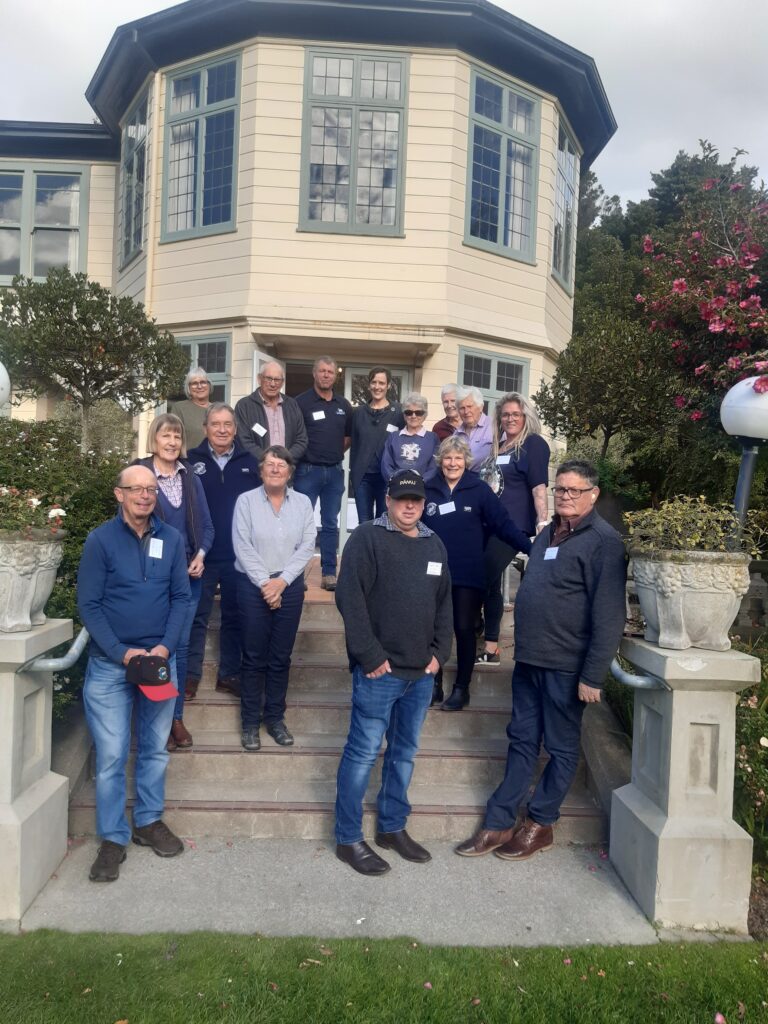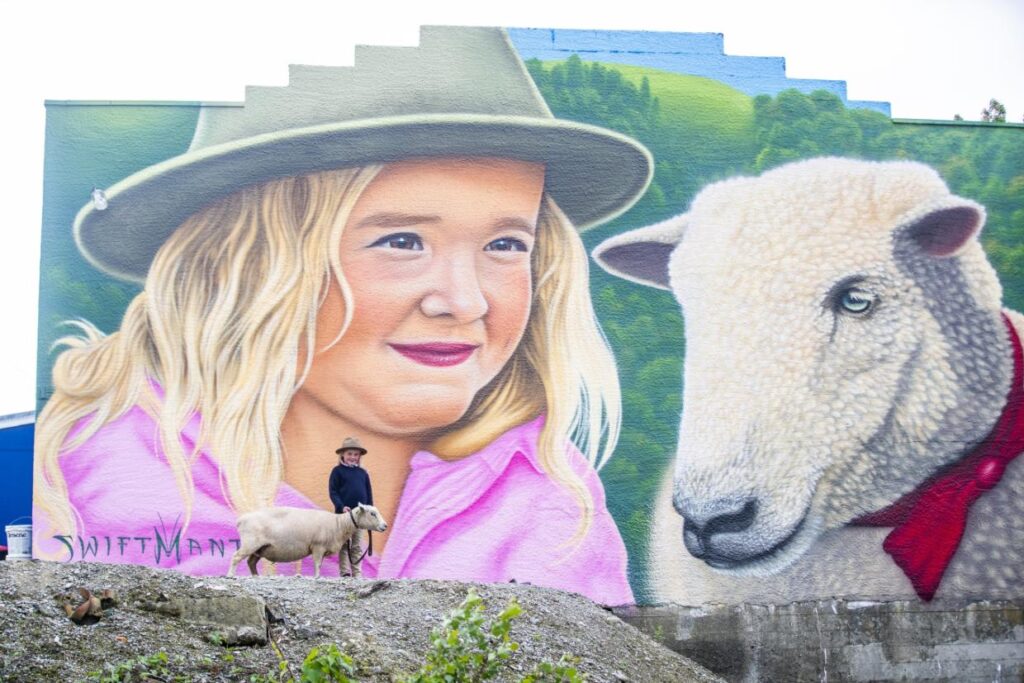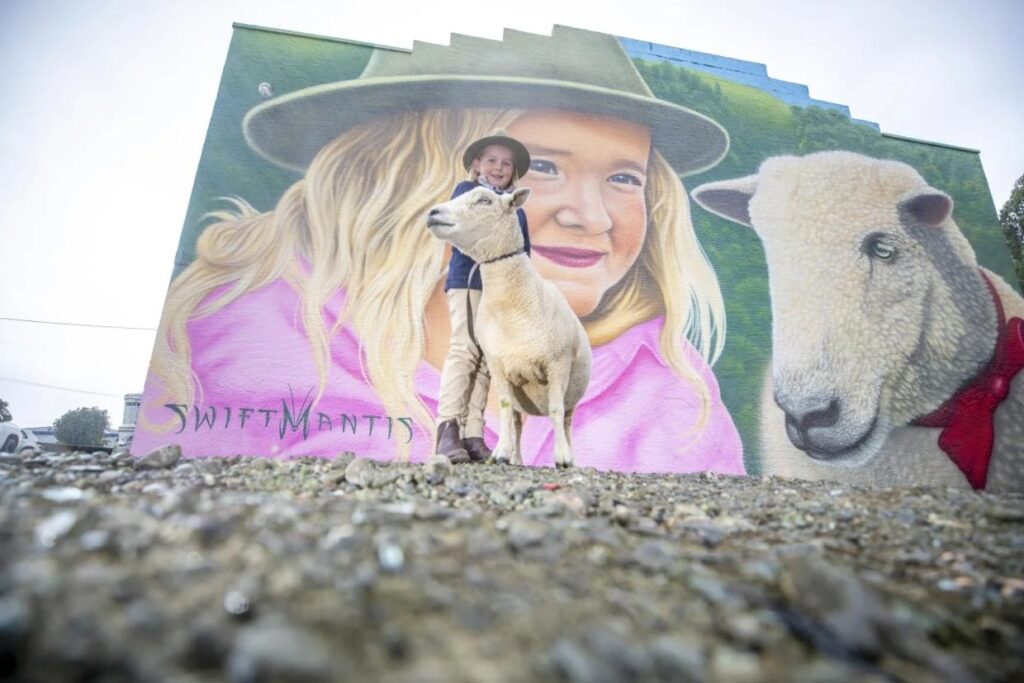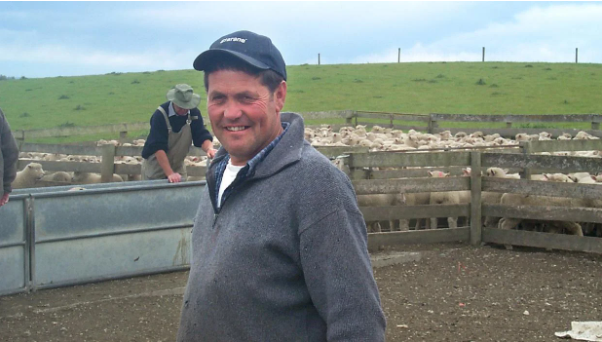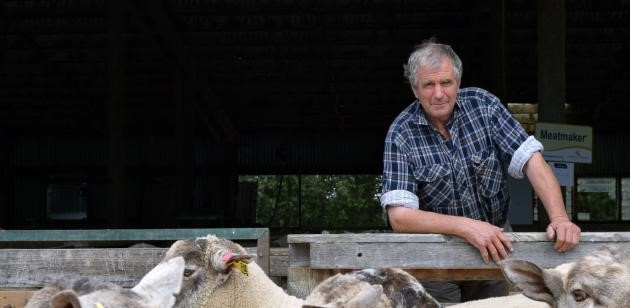The NZ Southdown Society Flock Book for 2024 has been published and non-members and interested visitors can view it online here
Archive for the ‘Southdown News’ Category
Annual Southdown Tour & AGM 2024
The Manwatu and Wairarapa Southdown Tour and AGM began at Palmerston North on the 6th May, 2024 with the late afternoon AGM and then a dinner at the Copthorne Hotel.
On Tuesday 7th May, we boarded a bus with 14 to start with and over the two day added a further two. We left Palmerston North on a fine morning and went to Silverdale Stud – Diane and Janet Gray’s at Rongotea. We looked over a very good line of Stud sheep. From there we then headed south towards Levin and looked at the Stud Flock of Cory Prouting. Again a very good line up of Stud Sheep, and also in the cattle yards some very good Hereford Cows.
Leaving there we headed back to Massey University and had a very delicious lunch at Wharerata then onto the Massey Veterinary School and went through the large animal section with a very good female lecturer telling us about what is done as it is the Vet training section. Leaving there it was over the Pahiatua track and onto the Wairarapa desert and arrived at Solway Park Hotel Masterton.
The following morning Wednesday 2nd May and a good frost we again got onto the bus and went North East to Rob and Lucy Thorneycroft. Beautiful Autumn tones of the trees and the grape vines and oh the country so dry. We were welcomed by Lucy and and then able to look over their Stud. Great how good Southdown’s handle the dry conditions. Another very good flock and they had some of their Stud Angus sale Bulls for the experts to walk through and comment on. The Bulls were big strong animals and very quiet.
We waved them good-bye and headed south to Jill Baird’s Wiri flock. Again a different line of very good sheep that were handling the very dry conditions well.
After Jill’s we went to the Gladstone Inn and after that we heading back to Solway and farewelled 8 of our group who climbed onto a mini bus that took them to Wellington to catch flights South. The others of us came back to Palmerston North by car and farewelled each other there.
Even though there was not a large number on the Tour it was still a very happy gathering and as always hosts seem to think Southdown breeders are hungry and provide such nice food along the way. Like the Southdown sheep we saw at the four studs we all went home in good condition.
To all who attended we thank Jill and Janet for arranging and hosting the tour.
One of our newest Southdown Studs featured on Wonderwall!
Sometimes a sweet little story deserves big-time treatment.
So it proved with one of the most striking murals to emerge from this month’s South Sea Spray street art festival in Winton.
SwiftMantis (Mikal Carter) of Palmerston North, who in late 2022 painted the celebrated Strangs cat on Invercargill’s Esk St WEA building, has this time turned his talents to the story of young Charlee Hazlett and Ellavetta.
Charlee was just 4 when she and her little sister Greer were gifted pet lambs.
Charlee raised Ellavetta to be a prize-winner and now, at 8, she has a flock of 85, which she manages with Greer – officially registered as Hazlett Southdowns under C&G Hazlett.
Seeing herself up there on the wall – “it’s really cool’’, Charlee said.
She was also impressed that SwiftMantis managed to get Ellavetta’s wool just right.
“I go to St Thomas Aquinas in Winton and my class has just walked around all the paintings,’’ she said.
When they got to hers – “they really liked it’’.
Central Southland College principal Grant Dick said the project stood as a reminder of the community spirit and the importance of nurturing shared spaces.
“The incredible talent and creativity of the artists involved have not only brought beauty and vibrancy to our surroundings, but have also sparked a sense of pride amongst us all,’’ he said.
“I believe the breathtaking murals will become part of Winton’s identity and will have a lasting impact on our community.’’
Strong bids round off seasoned stud career
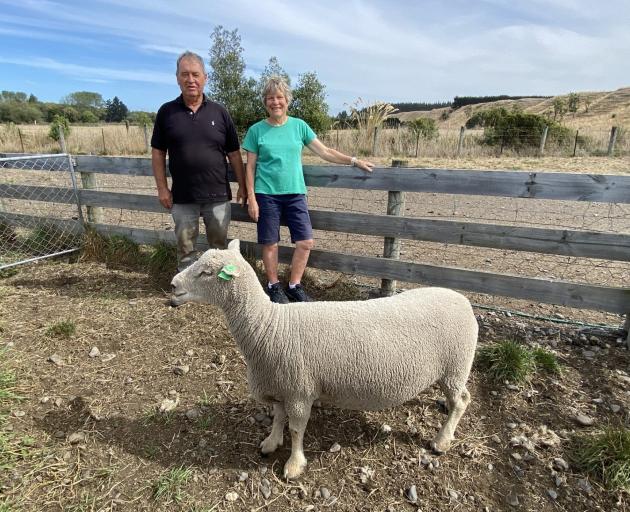
Wayne and Jenny Chisnall of Amberley alongside the top-priced four-tooth ewe sold for $2050 to Merrydowns Stud’s Blair Robertson, of Gore, at the dispersal sale of their Hursley Downs ewe flock.
Amberley’s Wayne and Jenny Chisnall have bowed out of Southdown breeding on a high.
Strong bidding at the dispersal sale of their Hursley Downs stud ewes caught them by surprise.
Leading the catalogue was a top price of $2050 in the offering of 56 Southdown mixed age ewes, 36 two-tooth ewes and 29 ewe lambs.
Equally as pleasing for them in signing off during a deflated lamb schedule were the average prices — $535 for the older ewes, $515 for two-tooths and $340 for ewe lambs.
Two ewes passed in were snapped up by a buyer before the online auction on Bidr had completed.
The couple will continue to farm in semi-retirement, running commercial sheep and Angus cattle at their 80ha farm near North Canterbury’s Amberley Beach without the workload of a stud operation.
Mrs Chisnall said they had no inkling beforehand the demand would be so strong.
“Absolutely not, the results had exceeded our expectations. It totally blew us out of the water. We don’t show our sheep as a lot of breeders do, but they were seen on a Southdown tour last year by quite a few breeders and this current viewing may have assisted with the sale. Maybe that played into our hands, not that it was planned.”
A good line of genetics developed over the past 15 years had probably created interest, she said.
The sheep were sold to 21 stud and commercial buyers throughout the length of the country from Keri Keri in the north to Gore and Te Anau in the south.
The top-priced ewe went to Blair Robertson’s Merrydowns Stud, of Gore, and the second top ewe was sold to Christina Jordan, of Willowhaugh Enterprises in Blenheim.
Fittingly, the two studs had provided much of the genetic base on the sire side of their stud flock.
Mr Chisnall said buying top rams from them in the past had paid off and resulted in the line-up of ewes for sale.
He said the Merrydowns and Willowhaugh cross had worked well for them.
“Probably our goals were to just breed a good commercial ram that was sound. We had an Angus stud before we started the Southdowns and it was on similar lines — to produce a good commercial type of sire. Our philosophy was if you keep buying good rams the ewes will look after themselves and get better and better. If we had the money we always bought the top rams we could at Merrydowns and Willowhaugh. They were the two studs we concentrated on buying our rams from. Both those breeders knew good stock and bred good stock.”
The couple started the Southdown stud in 2008 to complement their Angus stud which they eventually dispersed to concentrate on the Southdowns.
At its peak the stud numbered 120 ewes. They mainly sold 60 to 70 rams a year privately to North Canterbury buyers as well as farmers further south and North Island stations.
Repeat customers often opted for the Chisnalls to pick rams for them and they would arrive sight unseen.
The Chisnalls also supported the Canterbury ram and ewe fair with one or two rams.
Mr Chisnall said they kept prices at realistic levels for their commercial rams.
“A lot of the time guys would ring and say they wanted four rams and I would say the price, say $800, and they would take five.”
Mrs Chisnall said she had mixed feelings about leaving stud breeding.
“I am definitely sad. Not that the Southdown guys would like me saying this, but they were my teddy bears. It’s been an amazing journey and we’ve learned lots along the way. The Southdown community are a great group of people to be with. At the moment our sheep are in great order and we are managing, but given some more years it might be difficult to have the sheep at the level we want.”
Mr Chisnall said they had enjoyed the semi-retirement feel of farming about 100 commercial one-year Romney ewes they bought each year and put to the Southdown ram.
He said the ewes lambed about 160% and were sent to the works at the same time as most of the lambs departed at 12 weeks of age.
However, now that he was 70 he could see the day when handling the “big and strong” Southdowns had an end date.
They were both fit and loved working with the sheep, but it was not getting any easier in the yards so the time was right to leave, he said.
They also run about 100 1-year-old and 2-year-old Angus heifers, buying 50 calves and taking them through to 2 years old for the spring market.
The plan is to increase the heifer numbers now they had left Southdown breeding.
“The decision to disperse the stud was made over Christmas as we felt the time was right to give younger stud breeders the opportunity to build on the genetics we have built up over 15 years.”
Mr Chisnall said they would continue to observe the progress of Southdown breeding.
“The Southdown breed is in great heart with benefits of early maturing lambs and a lot of rams are bought for hogget mating. Most of our clients are in North Canterbury and some North Island clients and we thank them for their support over the years. We are not finished farming yet and continue to support Southdowns and farming in general. It’s a great way of life, even with its ups and downs.”
They will continue to sell the last of the ram hoggets this year.
Their bloodlines could also continue if not by name.
A Cheviot buyer has indicated he might start his own stud from a base of 10 Hursley Downs ewes.
Story credit Tim Cronshaw
Sale of prized ram puts more than 4000 meals on tables
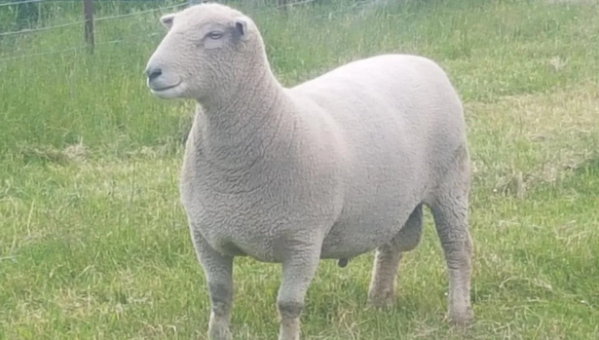
The sale of Waimate breeder Chris Medlicott’s ram has provided more than 4000 meals for people experiencing food insecurity across Aotearoa.
More than 4000 meals have been provided for less fortunate families from the generosity of one man and the sale of his prized ram.
Chris Medlicott, a breeder for Clifton Downs Southdown Stud, donated the proceeds from the ram he sold in his November on-farm sale to two charities that help to feed less fortunate families.
Every year, Medlicott hosts a ram sale of up to 80 sheep. After seeing South Canterbury breeding organisation Shrimpton’s Hill Herefords donate a bull to Meat the Need and Feed Out, Medlicott said making his own donation after the sale was a no-brainer.
The charities helped to turn donations of cash, livestock and milk into meals for families with help from Silver Fern Farms, Miraka and Fonterra.
The proceeds from Medlicott’s ram sale created 4295 mince and milk meals for 110 food banks and community organisations nationwide through the help of a number of charities.
Medlicott said being able to donate homegrown protein to families facing food insecurity was priceless.
“It’s always a good feeling that you’re helping someone in need, and in all walks of life, really,” he said.
“I’m really proud that we produce top quality New Zealand food, but there are some people in this country who can’t afford to eat it.
“We want all New Zealanders eating produce off our farms and that was really the reason for me to donate.”
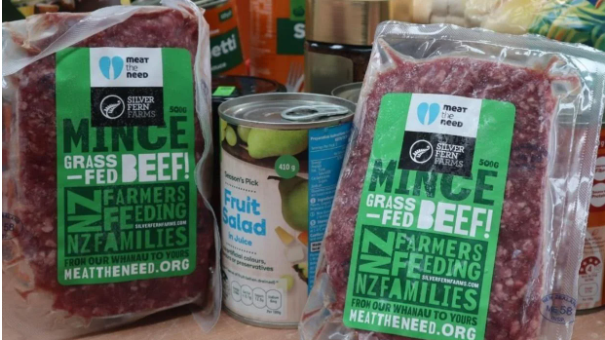
Meat the Need is a national charity helping to connect farmers with charities to help put food on the table for struggling Kiwis.
He said times were tough on farms, with inflation the highest it had been in 40 years at 16.3%, but donating was something Medlicott was passionate about and would continue to do.
“Donating is always a good thing to do, to be honest I think New Zealand society has lost the giving aspect a wee bit, so it’s nice to be able to make a bit of an impact on whoever needs it.”
Strapped farmers holding on to older rams come sale time
Sheep farmers feeling the pinch are keeping on old rams rather than replacing them this season, southern breeders say.
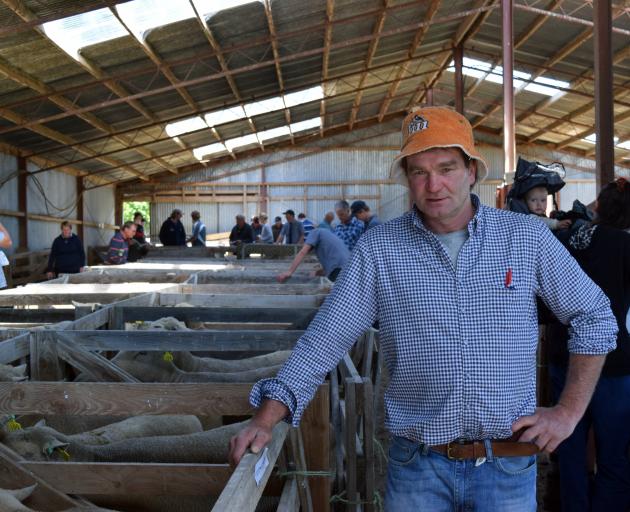
Merrydowns Romney and Southdown Stud owner Blair Robertson at his 15th annual on-farm ram sale in Waikoikoi last week.
However, farmers buying rams this season continue to invest in genetics proven to perform.
Merrydowns Romney and Southdown Stud owner Blair Robertson said despite offering his best ever line of rams, prices were slightly down at his 15th annual on-farm ram sale in Waikoikoi last week.
“It didn’t go too bad.”
He had a full clearance of the more than 200 rams across the two breeds on offer, selling for an average of $1450.
The highest price paid for a Southdown ram was $4000 and a Romney ram $3800.
For both breeds, top and average prices were down on last year.
“A little bit back.”
He believed reasons for the price drop included the state of the economy and farm budgets being cut.
“Everyone is buying bare minimum at the moment, whether it be fertiliser, grass seed or rams.”
No matter what the economy was doing, he never “skimped” when buying rams, bulls and fertiliser.
“They are the economic drivers of farm profitability.”
Another reason for prices being down at his ram sale could be weaker prices for wool and lamb and mutton schedules.
Some of his clients bought fewer rams this season because they had kept on rams they would have otherwise retired.
“They buy a couple less and use the old boys.”
About 60 ram buyers registered at the sale, and more were active on Bidr, he said.
He was “stoked” many of his clients were repeat buyers.
Rams were sold to farmers between Bluff and Wairoa, he said.
“It was still a good sound sale and people got value for money and were real happy with their rams.”
Wharetoa Genetics co-owner Garth Shaw will offer 300 rams for sale on his farm in South Otago today.
He expected farmers to buy fewer rams this season, as many “try and make do with what they’ve got.”
“That’s all right — if they are still doing the job, what’s the point of replacing them?”
He expected demand would be strong for the rams with genetics that were proven to perform.
Any money spent on genetics should be considered an investment in the future rather than an annual cost, he said.
“The progeny of those rams will be around for nine years.”
One way a farmer could combat weaker schedule prices was to use genetics to put more weight on lambs so they could be sent away heavier.
“A farmer is in control of that destiny, 100%. He has no say on interest rates or the price of anything, but he has control of the genetic direction of his flock.”
The only commodity sheep farmers would make money from this season was lamb, he said.
A lamb being sent away at 17kg was an “absolute crime” when it could be kept on to put weight on for up to a month.
“There’s heaps of people doing it because they are in fear of the schedule going down. It might go down, but the arse is not going to drop out of it like [in] some years.”
Farmers need to look for opportunities to improve their flock to boost future production.
“Now is the time to implement some changes so in 15 years time you’ve got a flock which is worthy of the day.”
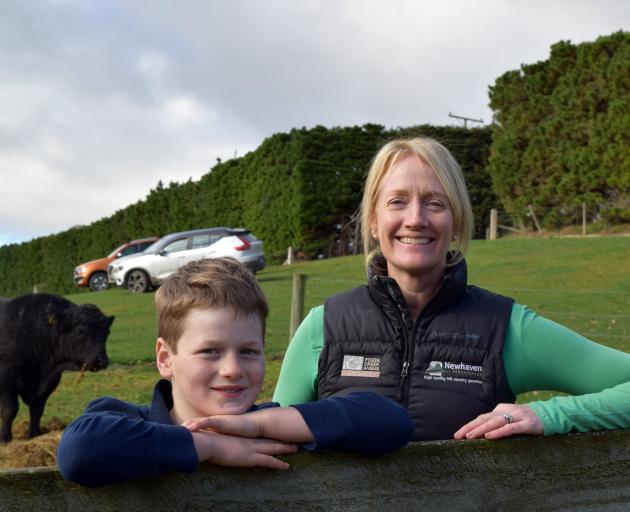
Private ram sales have been positive despite tough economic times for sheep farmers, Newhaven Perendales co-owner Jane Smith says.
Newhaven Perendales co-owner Jane Smith said orders for private sale of rams from their stud near Five Forks in North Otago had been positive this season.
Mrs Smith said when times were tough financially, a farmer focused more on making sure every sheep on their farm was performing.
“You should pay for the best genetics you can afford because you’ll get that return on investment.”
Probe tech data to help farmers marble meat better
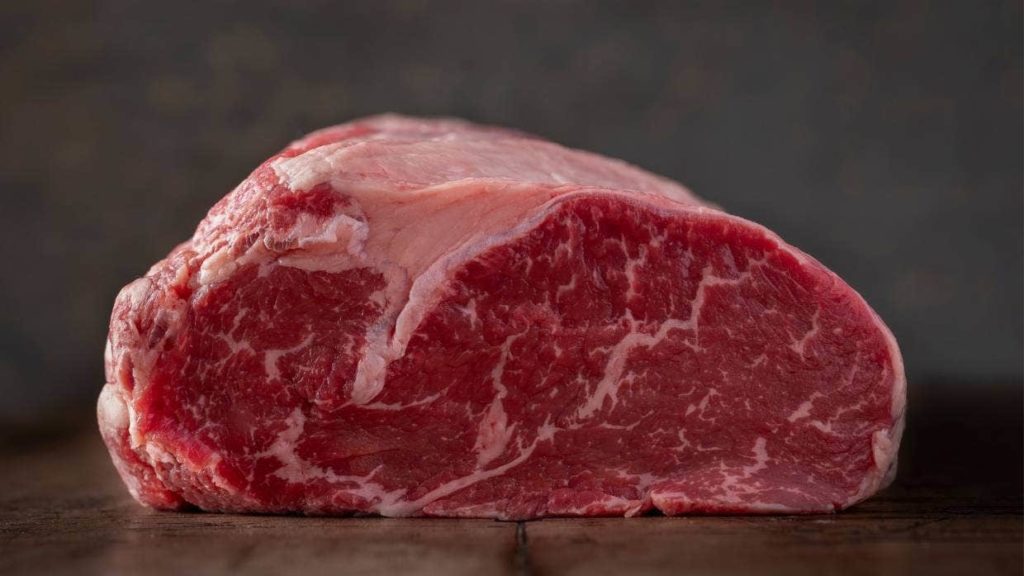
Alliance Group’s Pure South Handpicked 55 Day Aged Beef has been voted the best grass-fed ribeye steak in the world.
Alliance Group will be deploying probes created by an Australian company to measure the marbling of beef and intramuscular fat percentage in lamb.
This, according to the meat processor, will provide consistent meat quality across the board. A higher intramuscular fat (IMF) percentage would equal a good outcome.
Alliance Group livestock and shareholder services general manager Murray Behrent said the probe will go in the 12th rib of the lamb and cattle beast, analysing how much IMF or marbling there was prior to going across the scales.
According to the company, IMF and marbling percentages were the two largest contributors to the sensory experience when eating red meat.
Farmers would benefit from the data by making informed decisions around their breeding programs, where they were buying from, and what feed would give them the best returns (a reticular feed enabled a higher marbling on the animal), Behrent said.
The probes, made by MEQ, had been trialled at the company’s Timaru and Ōamaru plants for the past nine months, and would be rolled out to other locations, including Southland, in the coming months.
“Once the probes are rolled out across all the lamb and beef chains, we’ll send the farmers data on how their animals have performed.
“Then, over time, we will be able to start telling farmers which animals have high intramuscular fat and what those farmers are doing to achieve those good outcomes,” Behrent said.
The probe would also help in detecting if the IMF was consistent across lambs from different mobs.
Alliance Group’s meat consumer – the retailer or the food service or chef – would get a consistent product, giving the end consumer the same experience with the food, Behrent said.
“It’s all about consistency of the product. That taste is really important for chefs when cooking the product,” he said.
In Southland, the first machines would be rolled out from December and the rollout would be finished by the end of March 2024.
“I do know that part of marbling or intramuscular fat is driven by genetics and feed. Southland is in a good space to provide animal welfare because of the abundance of feed. All animals always have surplus grass to eat, and that good quality feed will ensure a higher probability of marbling,” Behrent said.
The probe claimed to withstand “the extremes of the processing environment” and cause “zero damage to the product”, according to its website.
New Zealand Agricultural Show: Southdown ewe the mother of all champions
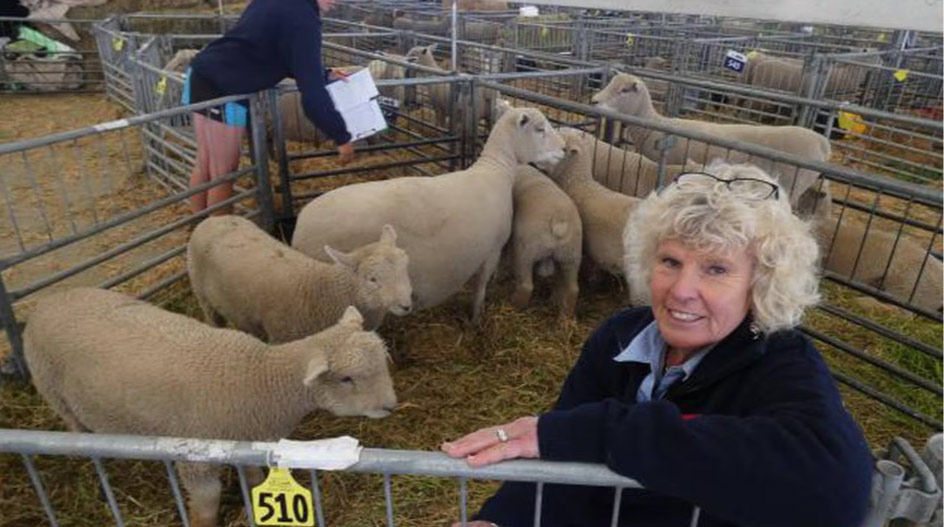
A Southdown ewe bred by Christina Jordan at Willowhaugh Enterprises will take some beating after giving birth to quadruplets following a symmetrical sequence of lamb deliveries.
A champion ewe is the mother of all mothers in the show ring.
The 2018-born ewe, 479-18, has produced near-perfect symmetry in her lambing sequence for the past four seasons, rounded out with a quartet of newborns in her latest effort, leading her to claim the Supreme Animal of the Show title at the New Zealand Agricultural Show.
As a ewe hogget, the Southdown ewe from the Jordan family’s Willowhaugh Enterprises delivered a single lamb, no mean feat for a first-time mother.
In year two she gave birth to twins and then triplets in her third lambing.
This season four lambs emerged, and the only minor gripe breeder Christina Jordan could come up with was the ewe-to-ram lamb ratio could have been reversed.
“She’s got three ewe lambs and one ram lamb though, so maybe she hasn’t quite got the symmetry right.
“Maybe she wants to increase the flock size quickly, I don’t know.
“I think she could go back the other way now, probably to triplets or twins.
“I would be quite happy as a lot can go wrong from the time they scan them and find they are having four.”
Virtually self-selected by this record, Jordan placed her in the New Zealand Agricultural Show and was rewarded with a red ribbon in the Southdown ewe over 30 months with lambs at foot class, before going on to win the supreme title.
“This is the first time she’s been in any show actually and amazing, she’s done it all herself.
“She’s reared all her lambs so now she’s had 13 of them and she’s 5 years old.
“She’s just one of the team who does the hard work and comes up with the goods.”
By the end of the first day, the show ring debutante added Supreme Champion Southdown, All Breeds Super Ewe, Supreme Meat Sheep of the Show and the big one – Supreme Animal of the Show to cap it all off.
Her quadruplets weighed in last week at an impressive total of 134 kilograms.
Jordan runs the stud with her nearly 97-year-old father, Ian, at Woodbourne near Blenheim airport.
She said the ewe had earned her money, as her daughter of a few years ago also won the 18-month to 30-month class at the show with twins, after lambing the previous year as a hogget.
Top mothering skills aside, she passes on her genetics freely as a ram lamb of hers was used for breeding within the stud.
Her high SIL figures for maternal, udder, meat and terminal values also stack up.
“The quads were born at the back paddock and I keep them near Dad’s house so he can keep an eye on the triplets. We only had nine triplets and one quad.
“He’s just in raptures over it and only has rose-tinted glasses for her.
“I think it’s quite emotional seeing a ewe with her four lambs and she’s had them all, she’s reared them all and we haven’t had to do anything.
“So to get them to the show all alive and relatively even is a real credit to her.”
Over time, he’s observed the ewe managing the feeding of her progeny two at a time before rotating the other pair half an hour later.
Her ewe lambs will end up as flock replacements and the ram lamb may eventually be sold to free up bloodlines.
As well as the 180 pedigree Southdown ewes and 40 hoggets, the family enterprise also runs a commercial flock, jersey dairy cattle, a Charolais stud and a vineyard at home base.
The Jordans’ Southdowns are sold at the Canterbury Elite Ram Fair and for the past three years, they have run an online ram sale in November.
Jordan said she’d had a quad-birthing ewe once before and had no desire to raise this to quintuplets next year.
A&P show a way to remember ancestors – Neville Moorhead
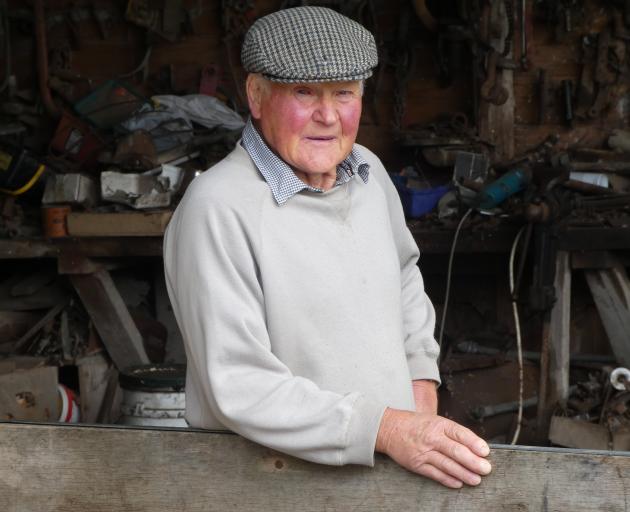
Southdown sheep breeder Neville Moorhead, 82, has gone through the ranks from being a sheep exhibitor, steward, convener, president, life member and patron at the Ellesmere A&P Show. PHOTO: TIM CRONSHAW
A Southbridge farmer whose great, great uncle competed at the Ellesmere A&P Association’s first show in 1871 is keeping the family legacy alive, writes Tim Cronshaw.
Neville Moorhead stretches easily over a fence before running a practiced eye over a small mob of Southdown rams to make his final cut.
The powerfully-framed stud sires cluster together before jostling to a corner of the front paddock at Holly Farm in Canterbury’s Southbridge.
It’s the day before the Ellesmere A&P Show and the 82-year-old, who turns over another year in December, shows no sign of nerves.
That’s to be expected from a veteran sheep exhibitor, who was in a pram for his first show and hasn’t missed one since.
The show’s honorary life member and patron can trace his family’s connection to the first event in 1871.
Staged in a borrowed paddock, a Moorhead was among the exhibitors.
“The first show ever held was in Southbridge township and one of the relatives, a great, great uncle, something like that, exhibited a pair of Clydesdales and was successful in winning with them. That’s where it came from and I suppose where I got a bit determined. You try to keep things going for as long as you can. It hasn’t been unbroken all the same.”
The 150-year link is a remarkable effort by one family.
His grandfather, Hugh Galpin, exhibited sheep with his uncle, Jack Galpin, as far as Timaru, travelling with their stock entries, mainly pigs. Larger pigs in crates were stacked from the bottom with lighter pigs in smaller crates on top and they would leave at about 2am for a day at the show.
Another grandfather, James Moorhead, achieved 50 years as steward in Ellesmere’s Jersey section.
His father, W.E. “Mac” Moorhead was president in 1960 and a patron and his brother, Murray, a class steward in the sheep section for 50 years.
Mr Moorhead said his family were keen stock people and it was only natural they wanted to exhibit animals.
“My mother lived up here and the family never had a car, but she used to exhibit sewing and cooking.
“She would ride the push bike down [eight kilometres] to the show in the morning with the basket in the front full of the cooking and that sort of thing.
“So there’s been that connection with the show for a long time. My family through the Galpins, Hurfords and the Moorheads have obviously been keen all the way through and keen on the stock breeding side so I guess that’s how it’s evolved.”
A competitive streak also explains the long run year-in and year-out.
Mr Moorhead is well past the 50-year mark. In his first year as the class steward in the Ryeland — an old English sheep breed — section he was probably 14 or 15-years-old and has been involved ever since. He was convener of the sheep committee a year after the show’s centenary in 1970 and carried this on for many years until becoming president for the 1988 show on a day of howling winds.
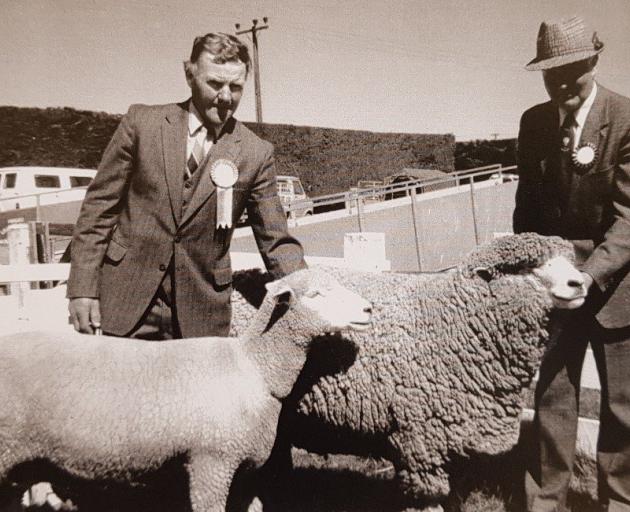
Neville Moorhead, left, with the champion Corriedale ewe and father Mac Moorhead with the champion Corriedale ram at the 1987 Ellesmere A&P Show. PHOTO: ELLESMERE A&P ASSOCIATION ARCHIVES
Four daughters exhibited pet lambs in their younger years before moving on from farming.
Today he still organises the stock judging for Young Farmers club members and his association with this organisation goes back to 1957.
The mixed-cropping farmer spent a lifetime growing processed peas, wheat, barley and white clover for seed on rich Paparoa silt loam soils in the district.
Southdowns and Corriedales played a large role in the mix. For many years they put Southdown rams to the Corriedale ewes for prime lambs.
The Southdown stud was established in 1935 by his father, and the Corriedales in 1957. The first Southdowns came from the nearby Oakleigh farm owned by Canterbury Seed Company when the flock was dispersed in 1945 and others from the Andrew family.
Mr Moorhead can remember helping drive the new Corriedale arrivals home from the now defunct Southbridge railway station. The Hawarden ewes had been transported by rail and got a chance to stretch their legs in the short journey to the family farm. The railway’s long gone, but the sheep are still there.
He broke away from his father at a young age to farm on his own in 1963, as a 22-year-old. Just over 160ha were leased for five years.
“I was pretty fortunate to have that opportunity to farm that. It was just down the road from the family farm and I tried to keep the stud work going down there, but it was a bit distant really.
“It was solely commercial and I had mixed cropping there again and I had 1000 ewes and a couple hundred hoggets. They were very good sheep too — Romney Merinos — and another indication of changing times was that prime lambs for the works one year made three pounds.”
That was good money and, once inflation is accounted for, more than he’s getting now.
After the four years elapsed, he bought a small block next to his father’s farm and has remained there since.
Part of the land across the road was his grandfather’s.
As he’s aged and the sheep “have got faster”, he’s leased some of the 114ha property to a neighbour across the road and more land to a farmer growing organic beans and potatoes.
Apart from the help of Frances Donald during lambing over the past nine years, he still runs the farm himself.
That’s left him with his stud sheep on a smaller working base with the cropping left to others.
“I’d rather be with the sheep to be quite honest. It’s just the love of animals I guess and breeding. It’s probably because I’ve had a big background since I was that big,” he said, reaching to the floor.
“My Galpin grandfather farmed Lymington, next door to Jo’s farm, on the Rakaia side of Holly Farm. They had several breeds of stud sheep and pigs. I was up at his place every weekend so I had a bit of background up there and then on the other side of the Hurford family they had Jersey cattle and pigs again so I had no choice, but I still had to enjoy it to carry on. I still enjoy trying to breed a slightly better one than last year.”
The Jo he’s referring to is Jo Jermyn Benny, author of the updated Ellesmere A&P Show history called Beyond the Show Gates.
Mr Moorhead’s story is one of many in the publication — just a bit longer than most — and the pair share the same bond for the show and have farming ties.
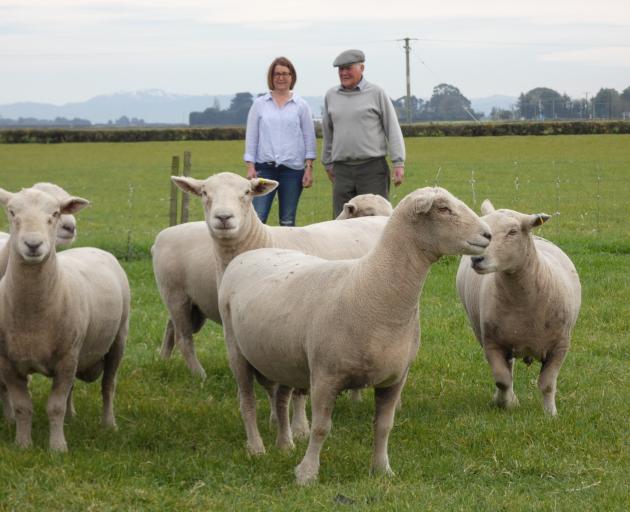
Southdown and Corriedale sheep breeder Neville Moorhead at Holly Farm in Canterbury’s Southbridge with Jo Jermyn Benny, author of an updated history of the Ellesmere A&P Show called Beyond the Show Gates. PHOTO: TIM CRONSHAW
The book updates two earlier editions of the show’s history to bring it up to speed.
Ms Jermyn Benny grew up in Marlborough on a sheep and cattle farm on the south side of Awatere Valley. Her husband, Andrew Benny, also has Marlborough connections, his mother growing up in the historic Langley Dale homestead, in Northbank, Wairau Valley, but he was raised in Canterbury.
They farm a mixed cropping and fine wool flock just up the road from Holly Farm, with the Benny family having farmed in the Southbridge district since the 1860s. In fact, the Benny family built the homestead on Holly Farm where Mr Moorhead lives now.
Ms Jermyn Benny visited the Ellesmere show while she was at Lincoln University, before marrying and moving to the district.
Their show link is also strong with Mr Benny on the A&P show committee since 2004 and was president over the challenging Covid-19 lockdown era.
Because of that he’s one of just three presidents to hold more than a one-year term. He was due to lead the show for its 150th anniversary in 2020 until it was postponed for the following year with attendance restricted to exhibitors to the disappointment of the community.
It was the first time the show was cancelled since 1942 during World War Two.
Ms Jermyn Benny has enjoyed researching the show’s history while updating events of the past 25 years. With the assistance of local historian Mike Noonan more stories and photographs were added to the accounts of earlier editions.
Records were lost to a 1906 fire which made it difficult to find early details, but there was no shortage of information more recently from monthly meetings and annual reports, she said.
Somewhat surprisingly, two conversation points have consistently raised their head.
“I’ve seen the early minutes and if you look right through from the 1900s to now the two key topics that keep coming up are traffic and toilets. Literally toilets are mentioned at almost at every meeting and the progression of facilities.
“Neville and I had a great day driving around at the showgrounds when we first started the project. He’s got a phenomenal memory for where buildings had been moved on sleds and the ring reconfigured and a lot of history that few people would have any idea about.”
Thousands of people turn up for the show, claimed to be the largest one-day A&P show in the South Island with the Mackenzie show also somewhere in this mix.
Mr Moorhead said the show had survived and grown because of a strong farming community and the rise of trade sites selling products over the years.
“There isn’t as many sheep in the district as there once was and the dairy has really taken off, but not at the expense of the stud breeding at the show. Some years ago there were many Jersey, Friesian and shorthorn studs in the district and they did exhibit at the show, whereas today there are very few of them.
“So, things have changed immensely and when you take where I am through to the Rakaia bridge thousands of sheep have gone out of that area to cattle and that’s one of the big changes I’ve seen.
“The cattle have dropped away at the show and pigs have dropped away. There are still a few sheep studs of various breeds in Ellesmere, but at their peak, goodness gracious, there would be one at nearly every road. That’s going back sometime, but shows you how numbers have dropped away.”
For all that, sheep entries have held up during show day, he said.
Ellesmere also receives about 1000 horse entries to keep the stock side strong.

Canterbury Southdown and Corriedale breeder Neville Moorhead was a six-year-old sitting on the ring pipe at the top of the showgrounds during the Ellesmere A&P Show’s grand parade in 1947. PHOTO: ELLESMERE A&P ASSOCIATION ARCHIVE
Mr Moorhead said long-established names of farming families remaining in the district had also created show loyalty.
Thumbing through a long list of presidents dating back to Reverend William Bluett in 1870, many of the same surnames crop up, as the next generation lines up for service.
The community-minded Moorheads have a long association with the local Anglican church with Mr Moorhead ringing the Sunday bell since he was 13-year-old.
Another tie that goes way back is his connection with the New Zealand Young Farmers Club and he was made a life member in 2014.
“With those three groups I sort of believe in joining and belonging to something and trying to attend it and do it well rather than belong to five or six organisations and send apologies to half of them. That’s just my attitude.”
He had 35 to 40 Lincoln University students at his farm recently, going through the fundamentals of sheep breeding and showing them the value of carcass conformation and other traits.
Some of them might go on to show sheep, while others would bank this knowledge when they bought their own stock, he said.
Over the course of decades of exhibiting sheep at Ellesmere he couldn’t count how many ribbons — many of them red — he’s won. Some of them are on the sideboard in the hallway and others stored in a bag.
Among many notable wins, a stand-out was a Southdown ram which went on from the Ellesmere show to become the champion sheep three years in a row at the Canterbury A&P Show in Christchurch about a decade ago. The ram won as a hogget, two tooth and four tooth and was a mainstay sire at the Holly Farm stud and there’s still 50 straws from him banked away.
Before that, another two champion ewes won their classes when the Southdown competitions were particularly strong at the Christchurch event.
Mr Moorhead had another good result in the sheep pens, winning several red ribbons at the Ellesmere A&P Show on October 14 in strong winds unseen since he was president of the 1988 event.
A silver cigarette case presented to him at a centenary show and a sugar bowl are prized possessions.
Ms Jermyn Benny said Mr Moorhead’s show longevity would take some beating.
“There’s not that many around that have that connection and kept it up. Neville is an active A&P person and I can’t think of anybody that would embody that A&P movement more than him. The fact that Neville was racing around the other day trying to find stock judges for the Young Farmers competition at the Ellesmere show just shows his commitment.”
Close to the front of the book is a photograph of the grand parade with men dressed in suits and women in hats and their finest dresses. Behind them are 1920s, 1930s and 1940s cars in neat rows.
As the horses and calves marched past the crowd a young Mr Moorhead, only 6 at the time, was sitting on the ring pipe at the top of the showgrounds watching the parade in about 1947.
The memory of those animals going past remains with him like yesterday.
He can’t imagine ever stopping showing.
“I will keep going for as long as I can. I don’t know how long it will be, but I’m still keen.”
Ram prices continue to rise
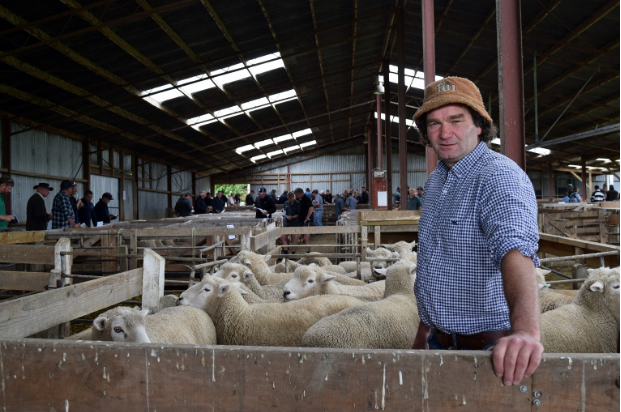
Merrydowns Romney and Southdown Stud owner Blair Robertson in a pen of his Romney stud sires at his 14th annual on-farm ram sale in Waikoikoi last week.
The pursuit to breed structurally sound, high-performing commercial rams continues in West Otago.
Merrydowns Romney and Southdown Stud owner Blair Robertson said prices were slightly up at his 14th annual on-farm ram sale in Waikoikoi last week.
Of the 123 Romneys on offer, 111 sold for an average of $1750, including a top price of $7000.
Of the 90 Southdowns on offer, 83 sold for an average of $1300, including a top price of $4800.
“It’s probably the best group of Romneys and Southdowns I’ve put up.”
Rams were sold to buyers between Wairoa and Invercargill “and everywhere in-between”.
The Sheep Improvement Limited figures for his flock had increased this season, particularly for the Romneys, he said.
Commercial traits in his flock continued to improve as the figures in the genetic evaluation database rise, he said.
When asked if he trusted the numbers, he replied: “I love the numbers, but there has got to be a sheep there. You’ve got to have a structurally-sound, high-performance, commercial animal first. There’s no point having high numbers and the rams can’t shag ewes or they’ve got crook feet and they pack up or they’ve got a short jaw and they won’t survive.”
Getting the sheep type and database numbers right was a balancing act, he said.
The family had been breeding sheep for more than a century and ran the biggest Southdown flock in the world, he said.
His Romney flock was “1200-ewes strong”.
“We are ridiculously tough on them in terms of culling and we are starting to see the benefits of that — we have bone, carcass and performance.”
He would continue to improve the flock and this season had bought three Romney rams from the North Island and a Southdown ram from Canterbury.
“They are four bloody good rams.”
Credit: Shawn McAvinue

